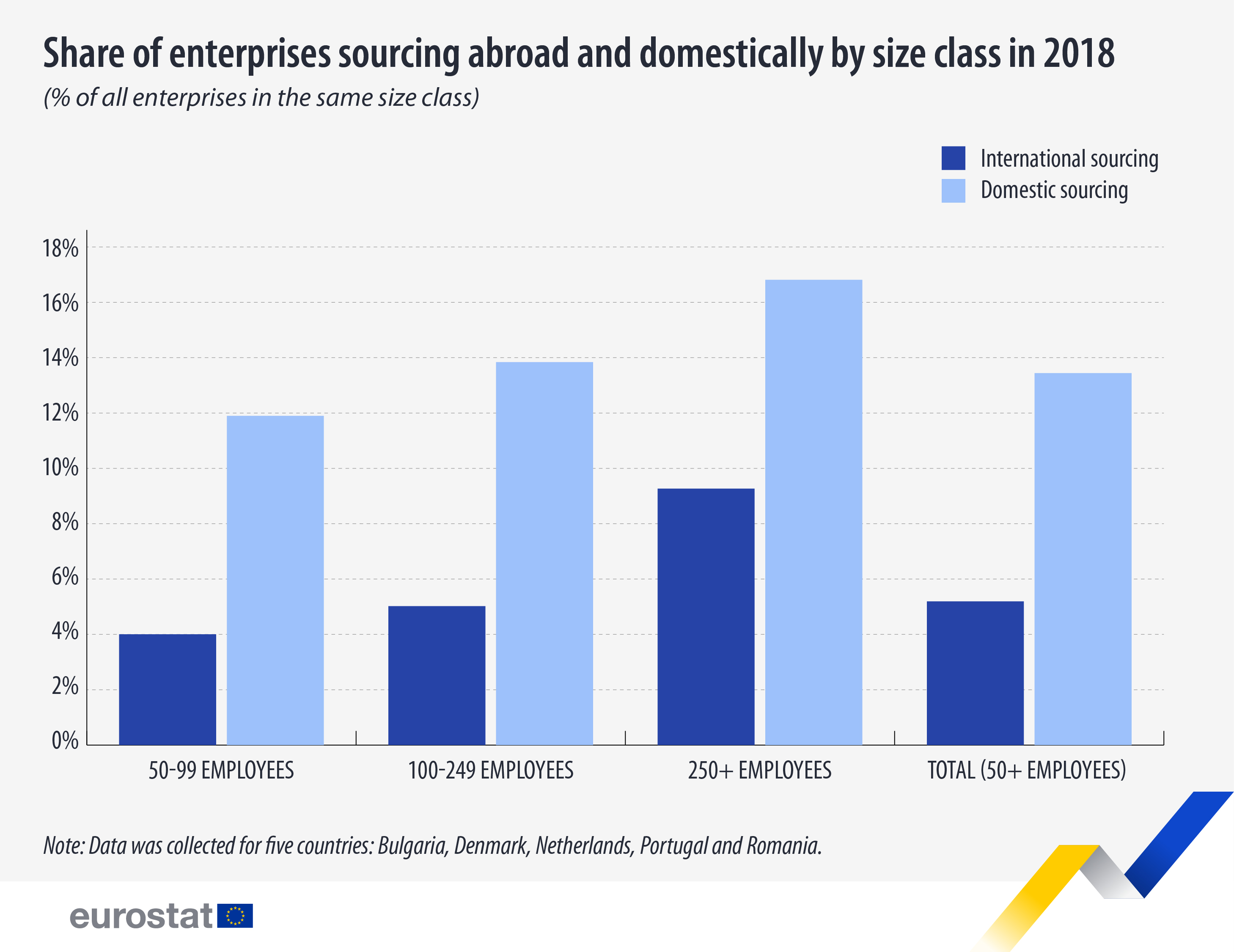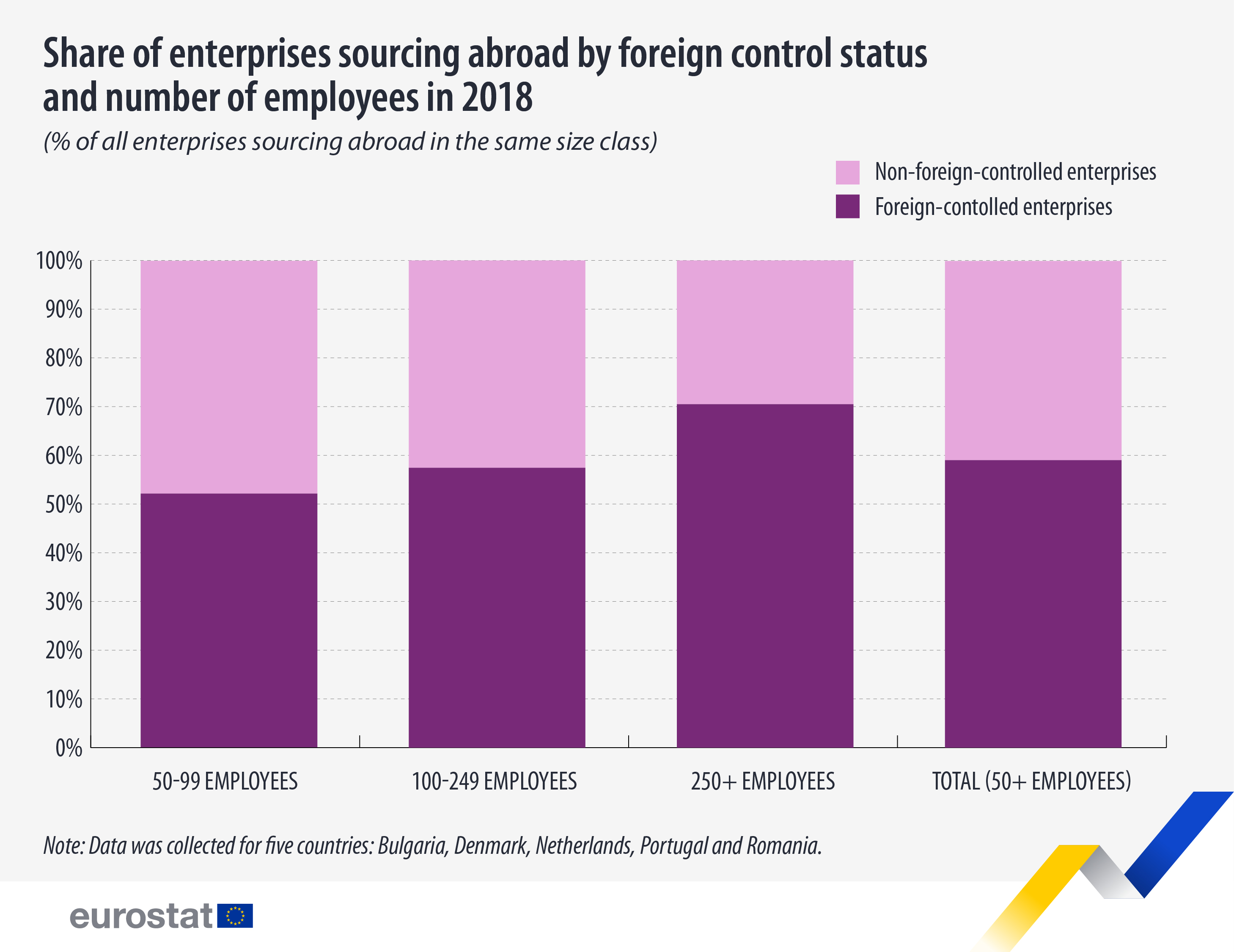In the last two decades, many European enterprises have sourced jobs previously performed domestically within the enterprise to other enterprises abroad (international sourcing) or domestically (domestic sourcing). Enterprises may engage in international sourcing for various reasons, such as cost reduction or to increase competitiveness.
Eurostat is now publishing the results of a microdata linking project, which identify the characteristics of enterprises that source abroad. The project links the results of the international sourcing survey (IS survey) to structural business statistics (SBS), international trade in goods statistics (ITGS) and foreign affiliates statistics (FATS) on an enterprise level, using unique enterprise identification numbers, while preserving statistical confidentiality. In doing so, new information has been discovered without increasing the burden on survey respondents and national statistical institutes. This new microdata linking exercise uses survey data gathered in 2017 and 2018.
Source dataset: Eurostat ad-hoc extraction
Overall, international and domestic sourcing were most common for enterprises with more than 250 persons employed (9% and 17%) and the least common for enterprises with 50-99 persons employed (4% and 12%).
Source dataset: Eurostat ad-hoc extraction
Furthermore, foreign-controlled enterprises were more likely to engage in international sourcing than non-foreign-controlled enterprises (59% compared with 41%). The larger they were, the more they engaged in international sourcing: more than 250 employees (70% of foreign-controlled enterprises engaged in international sourcing), 100-249 employees (57%) and 50-99 employees (52%).
Information on other characteristics of enterprises sourcing abroad, such as trader types, turnover, value added at factor cost, and business functions can be found in the Statistics Explained article on linking international sourcing with other business statistics.
For more information:
- Statistics Explained article on linking international sourcing with other business statistics
- News article on EU companies sourcing abroad
- Dedicated section on structural business statistics
- Dedicated section on international trade in goods
- Dedicated section on economic globalisation
Methodological notes:
- This microdata linking project on international sourcing was set up by Eurostat in 2018 and carried out in 2019 by the national statistical offices in five EU Member States (Bulgaria, Denmark, Netherlands, Portugal and Romania).
If you have any queries, please visit our contact us page.



